Rava dosa
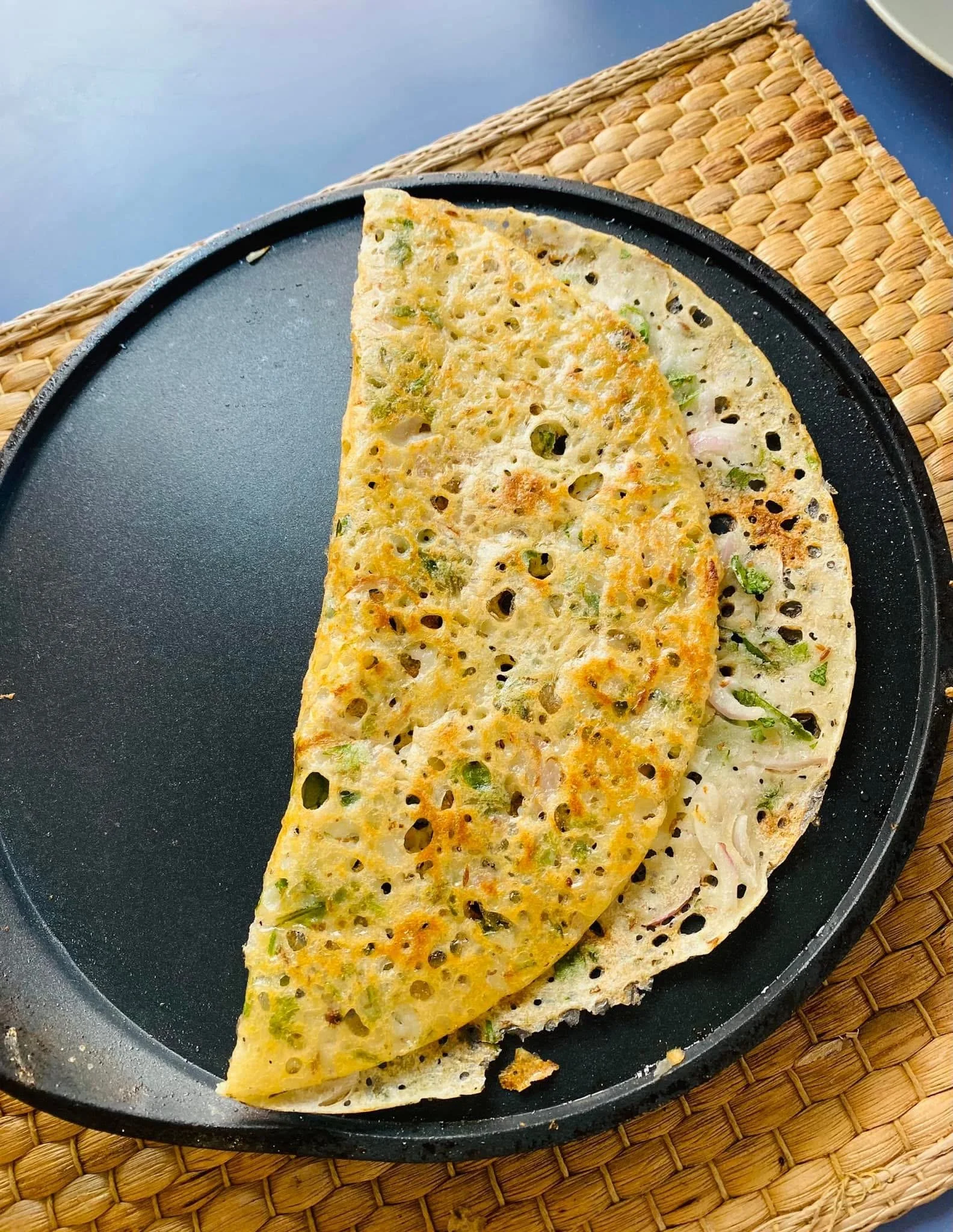
Rava dosa
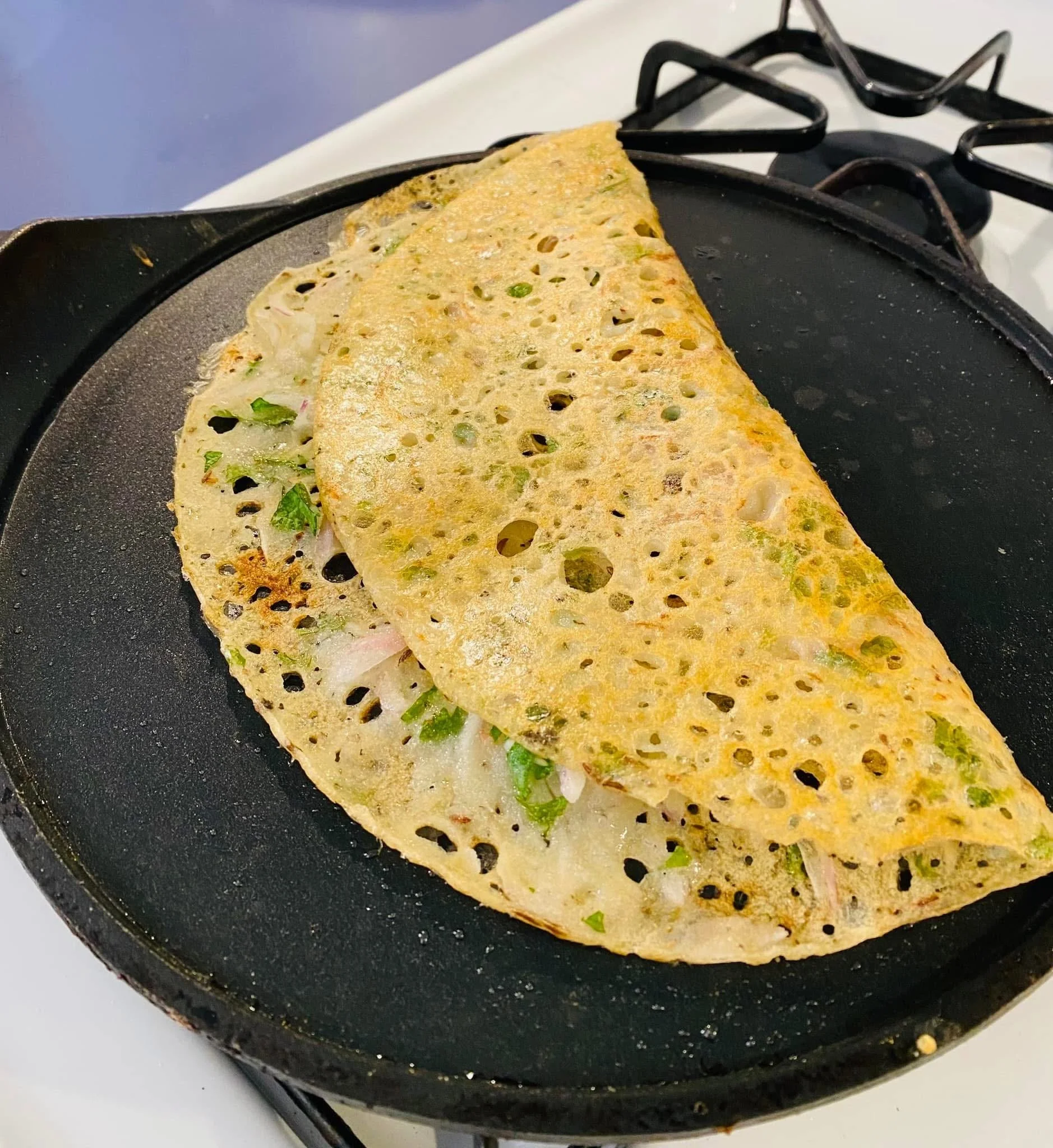
Rava dosa
Rava Dosa is a crisp and lacy South Indian crepe made instantly with semolina (rava/sooji), rice flour, and a touch of all-purpose flour. Unlike traditional dosa, it requires no grinding or fermentation—just mix, rest briefly, and pour onto a hot pan. With its golden lace-like edges and subtle flavors of green chili, ginger, and curry leaves, Rava Dosa pairs beautifully with coconut chutney, sambar, or tomato chutney. A quick breakfast or dinner favorite that tastes just like the restaurant version!
Ingredients (makes 6–8 dosas)
1 cup fine rava/sooji (semolina)
½ cup rice flour
2 tbsp maida (all-purpose flour, optional but adds crispness)
2 green chilies, finely chopped
1 tsp grated ginger
1 tbsp finely chopped coriander leaves
8–10 curry leaves, chopped
½ tsp cumin seeds
½ tsp crushed black pepper (optional)
1 small onion, finely chopped (optional, for onion rava dosa)
Salt to taste
3 cups water (adjust for thin batter)
Oil/ghee for drizzling
Method
In a mixing bowl, combine rava, rice flour, maida, cumin, pepper, green chili, ginger, curry leaves, coriander, onion, and salt. Add 2½ to 3 cups water gradually to make a very thin, watery batter (like buttermilk). Rest for 15–20 minutes.
Batter should not be thick; it should be pourable like thin buttermilk. Stir before every dosa, as rava settles at the bottom.
Use a cast-iron or non-stick dosa tawa. Heat until medium-hot (sprinkle a little water—it should sizzle immediately).
Take a ladle of batter and pour from a little height, starting from the edges, letting it naturally form holes and a lacy texture. Don’t spread with the ladle.
Drizzle oil/ghee around edges. Cook until bottom is golden and crisp. No need to flip unless you want it extra roasted.
Best enjoyed immediately with chutneys or sambar.
🌟 Tips :
Keep batter thin; a thick batter won’t give lacy holes.
Stir before every pour.
Pan should be hot but not smoking, else dosa won’t spread.
If batter becomes too thick as it rests, add a splash of water.
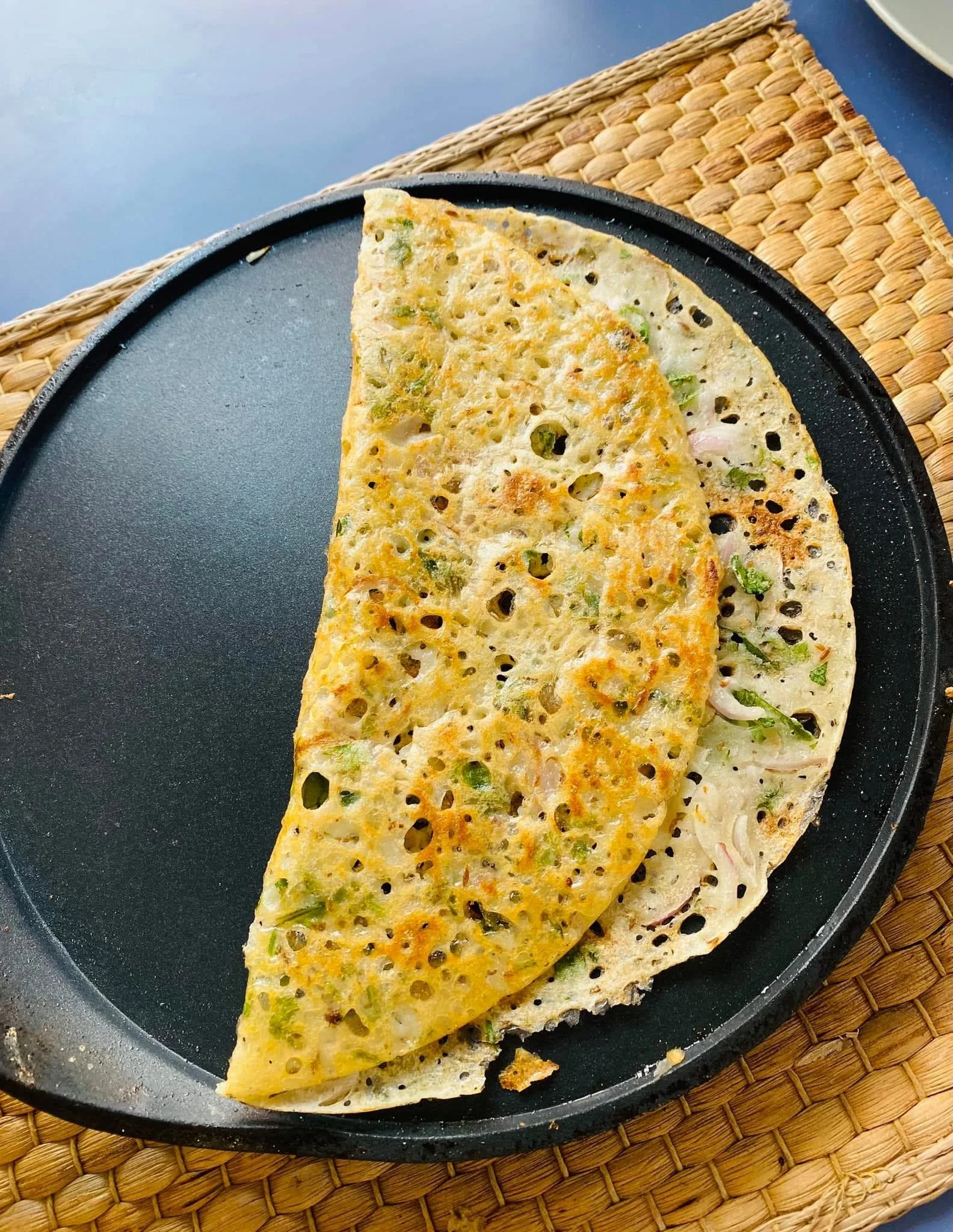
Rava dosa
A fragrant South Indian rice dish made with coconut milk, whole spices and vegetables, Brinji sits beautifully between a pulao and biryani. Light, flavourful and gently aromatic, it’s perfect for weekday lunch boxes, small gatherings or a comforting weekend meal.
Bring home the authentic taste of Tamil Nadu with this Instant Puliyodharai Podi—a fragrant, tangy-spicy mix that turns plain rice into temple-style Puliyodharai in minutes. Just mix with hot rice and gingelly oil for a delicious, travel-friendly, lunchbox-perfect meal.
Beetroot Rice or Beetroot Pulao is a colorful, one-pot South Indian dish made with rice, beetroot, and mild spices. Quick to make, healthy, and perfect for lunchboxes or weekday meals.
Easy lunch box recipe , capsicum rice that can be prepared under 15 minutes if you have cooked rice and the masala ingredients powdered and kept ready for lunch box variety rice dishes .befroe hand . It makes it simpler and hassle free if we can prepare the basic masala powder in advance that can be used to make other variety rice dishes .
A comforting South Indian classic — Rasam Sadham made the easy one-pot way! Tangy, aromatic, and ready in minutes, this quick rasam rice is the perfect weekday meal or cozy comfort bowl when you crave homely flavors without spending hours in the kitchen.
Discover the authentic recipe for Mani Kozhukkatai, a soft and savory South Indian dumpling , A perfect snack for any occasion!
A comforting South Indian side dish made with roasted brinjal, tamarind, and a blend of spices, Brinjal Gothsu is the perfect traditional accompaniment to Pongal, idli, or dosa. This easy, homestyle recipe brings together smoky flavors, tangy notes, and a touch of spice — a nostalgic taste of Tamil Nadu cuisine in every bite.
A timeless South Indian tiffin from our grandmothers’ kitchens — Arisi Upma or Rice Rava Upma — made with coarsely ground rice, simple spices, and plenty of nostalgia. Traditional in taste yet easy to make with today’s ready rice rava — comfort in every bite
A flavorful, aromatic Thai Green Curry that brings together creamy coconut milk, fresh herbs, and delicate spices — the perfect blend of heat and harmony for a cozy, flavorful meal.
Bring the divine flavor of Melukote Iyengar Puliyogare to your table — the temple-style tamarind rice from Karnataka that’s sweet, tangy, spicy, and utterly soulful. Simple to make, yet packed with that sacred prasadam magic.
Get ready to celebrate Diwali with a tempting collection of traditional Indian snacks and savouries! From crispy murukku, crunchy thattai, and flavorful mixture to festive sweets and bites, this gallery makes it easy to find your favorites. Each image below links directly to a detailed recipe so you can plan your Diwali snack platter with ease. Perfect for gifting, sharing, or enjoying at home with family.
A classic South Indian snack, Mullu Thengoyal is crunchy, flavorful, and perfect for festive snacking. Step-by-step recipe to make this traditional murukku at home.
Learn how to make soft, melt-in-the-mouth Gulab Jamuns at home. This classic Indian dessert features golden fried dumplings soaked in fragrant rose syrup, perfect for Diwali, weddings, or festive celebrations.
Crispy and light, Thenkuzhal Murukku is a classic South Indian Diwali snack made with rice flour and urad dal flour. This traditional recipe delivers that perfect golden crunch and melt-in-the-mouth texture that makes every festive celebration special
Soft Ras Malai discs soaked in creamy saffron milk and garnished with pistachios and saffron strands – traditional Indian dessert
Soft, spongy Ras Malai soaked in creamy saffron milk — a royal Indian dessert perfect for Diwali and celebrations.
Deliciuous Bengal sweet Cham cham that can be prepared easily at home .Soft, spongy Bengali Cham Cham sweets made with chenna, filled with mawa, and coated in coconut — a beautiful festive dessert for Diwali and celebrations.
Soft and grainy Kalakand made with milk and paneer — a rich, creamy Indian milk cake perfect for Diwali and festive celebrations.
Learn how to make perfect Badusha at home — a traditional South Indian sweet that’s crisp outside, soft inside, and glazed with sugar syrup. This easy Badusha recipe is ideal for Diwali and festive occasions.



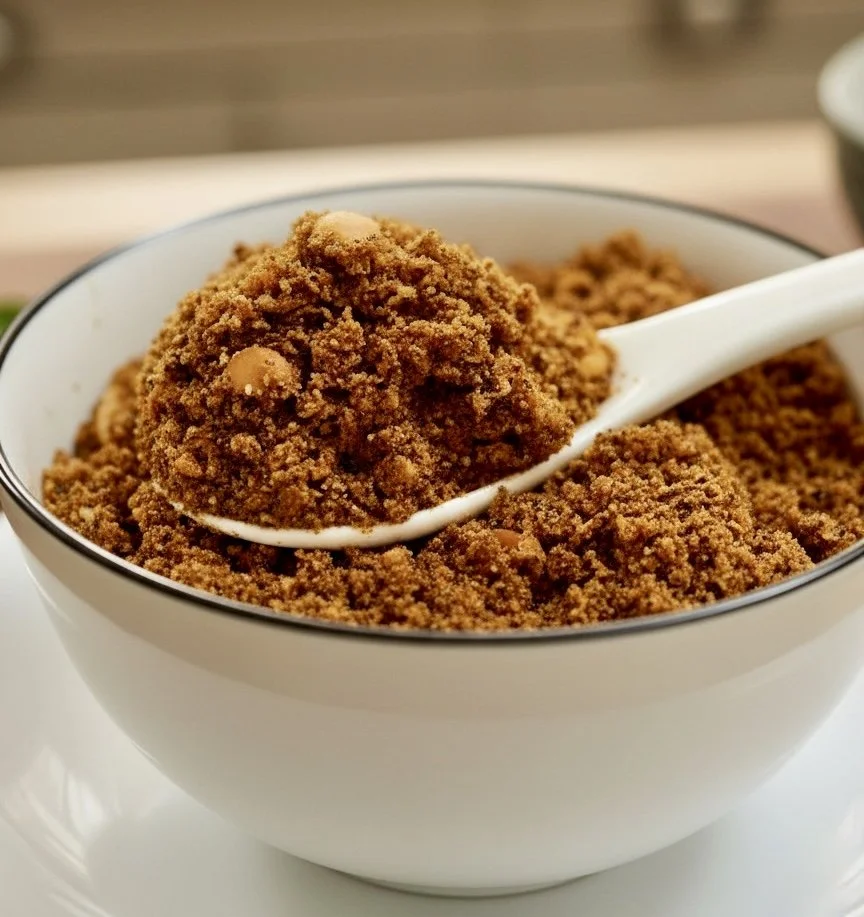

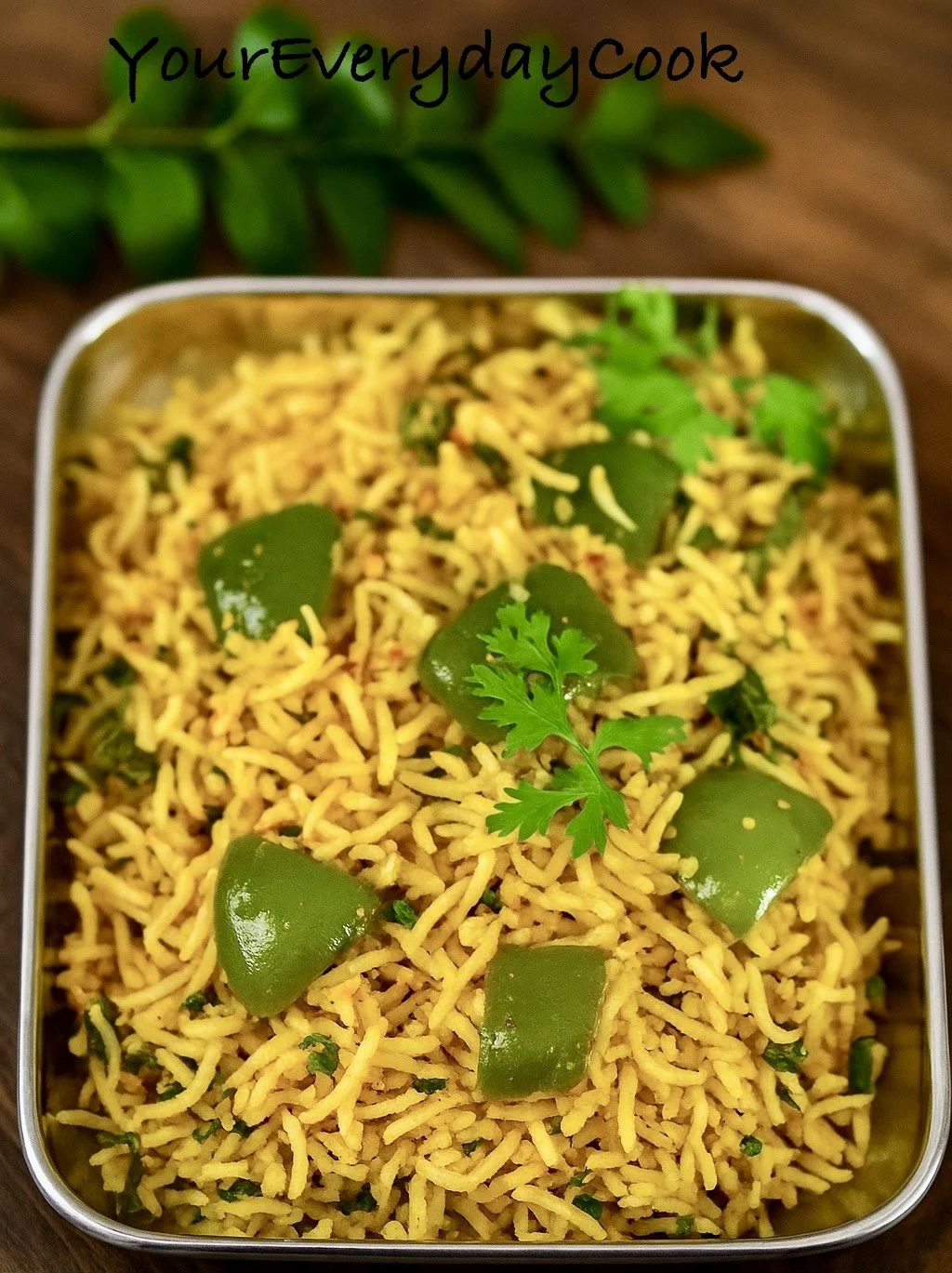
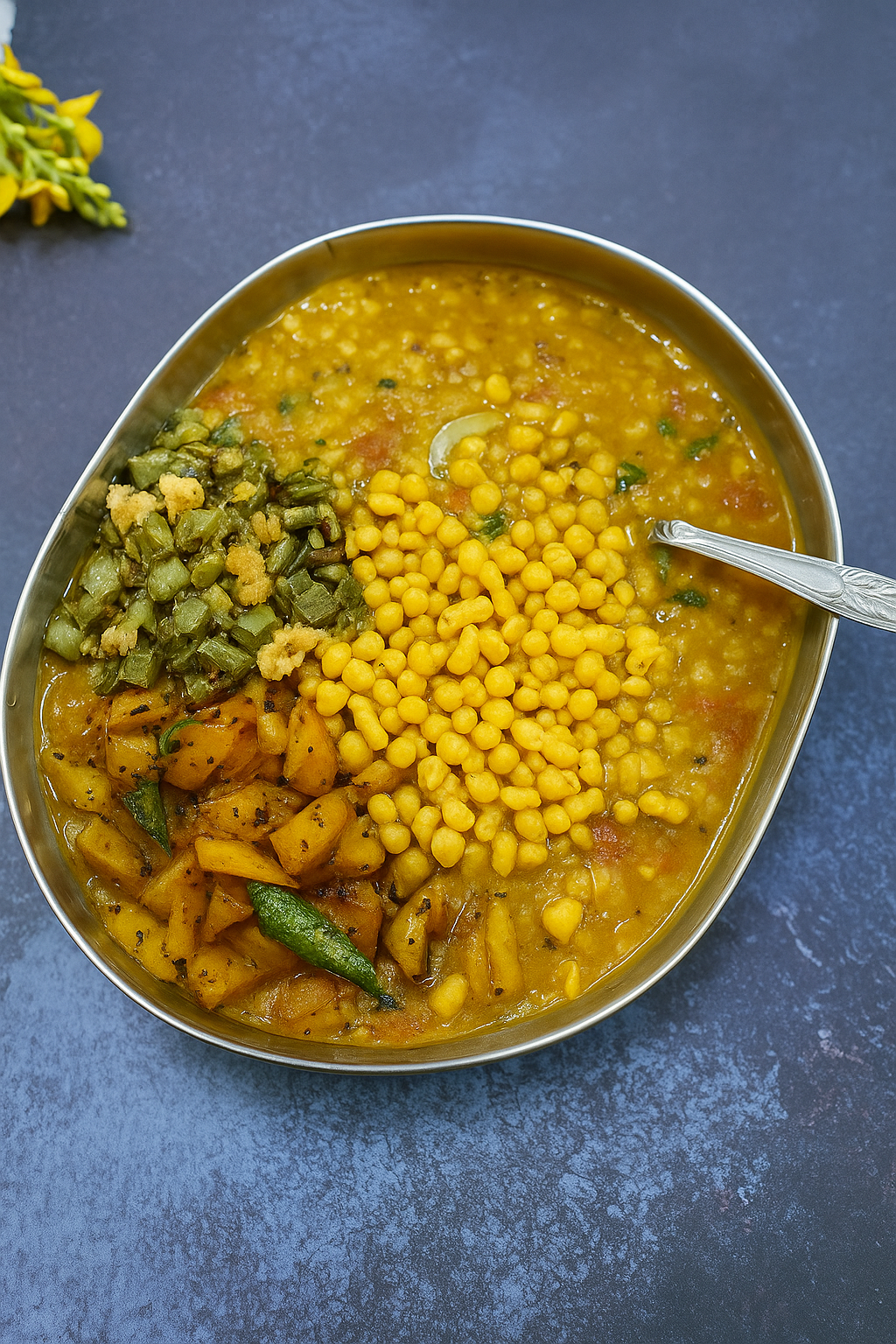

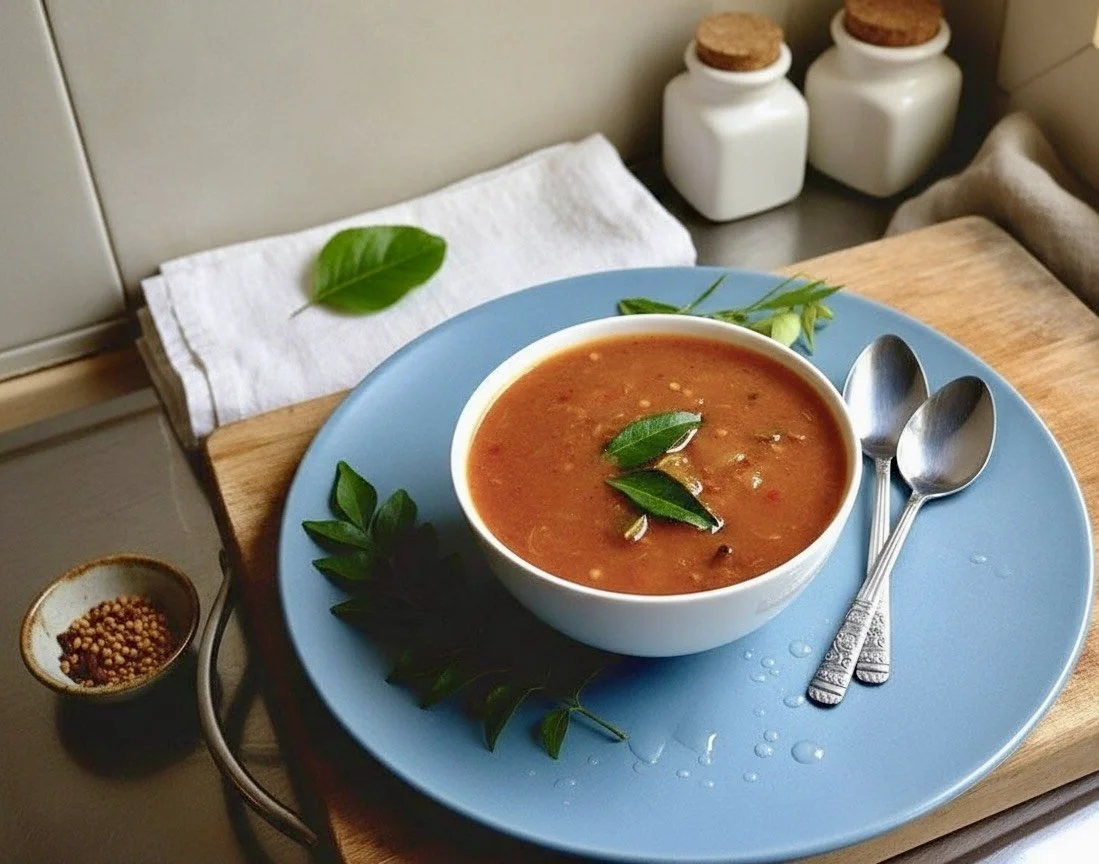

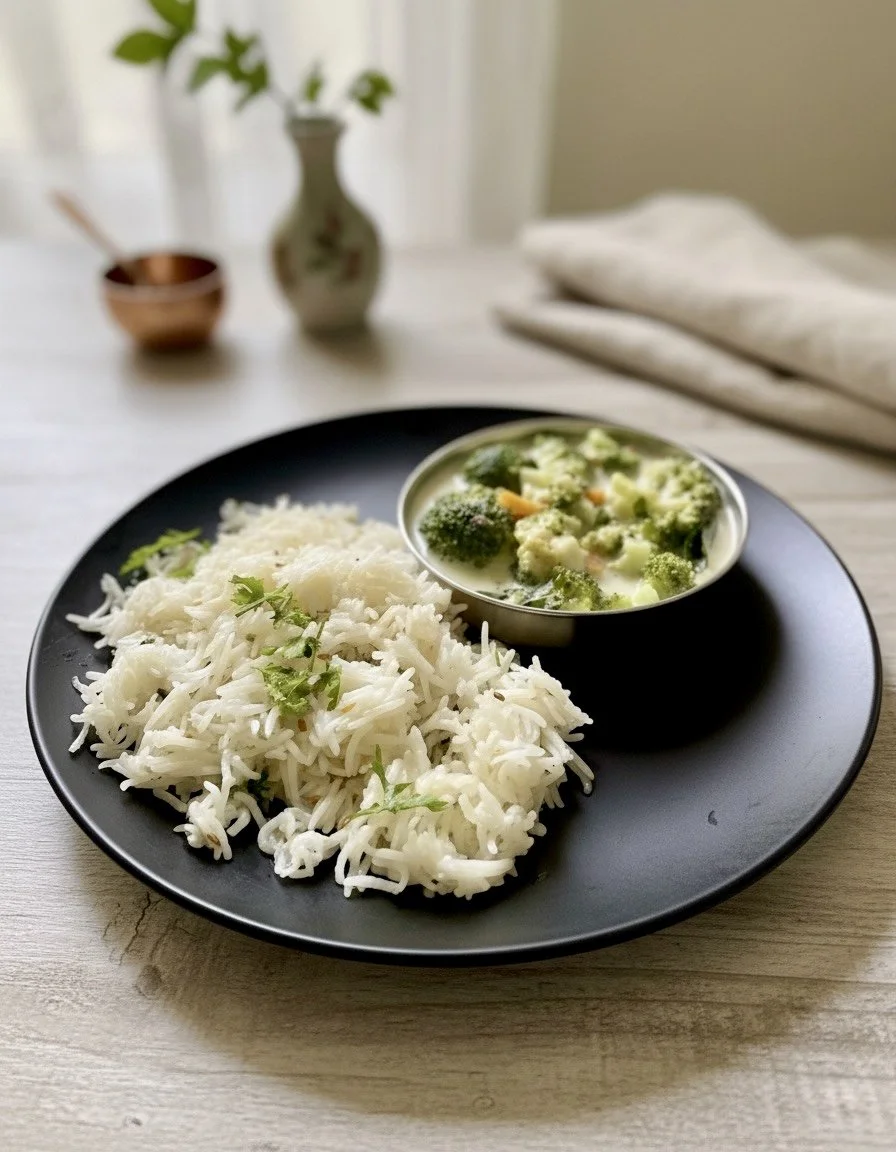
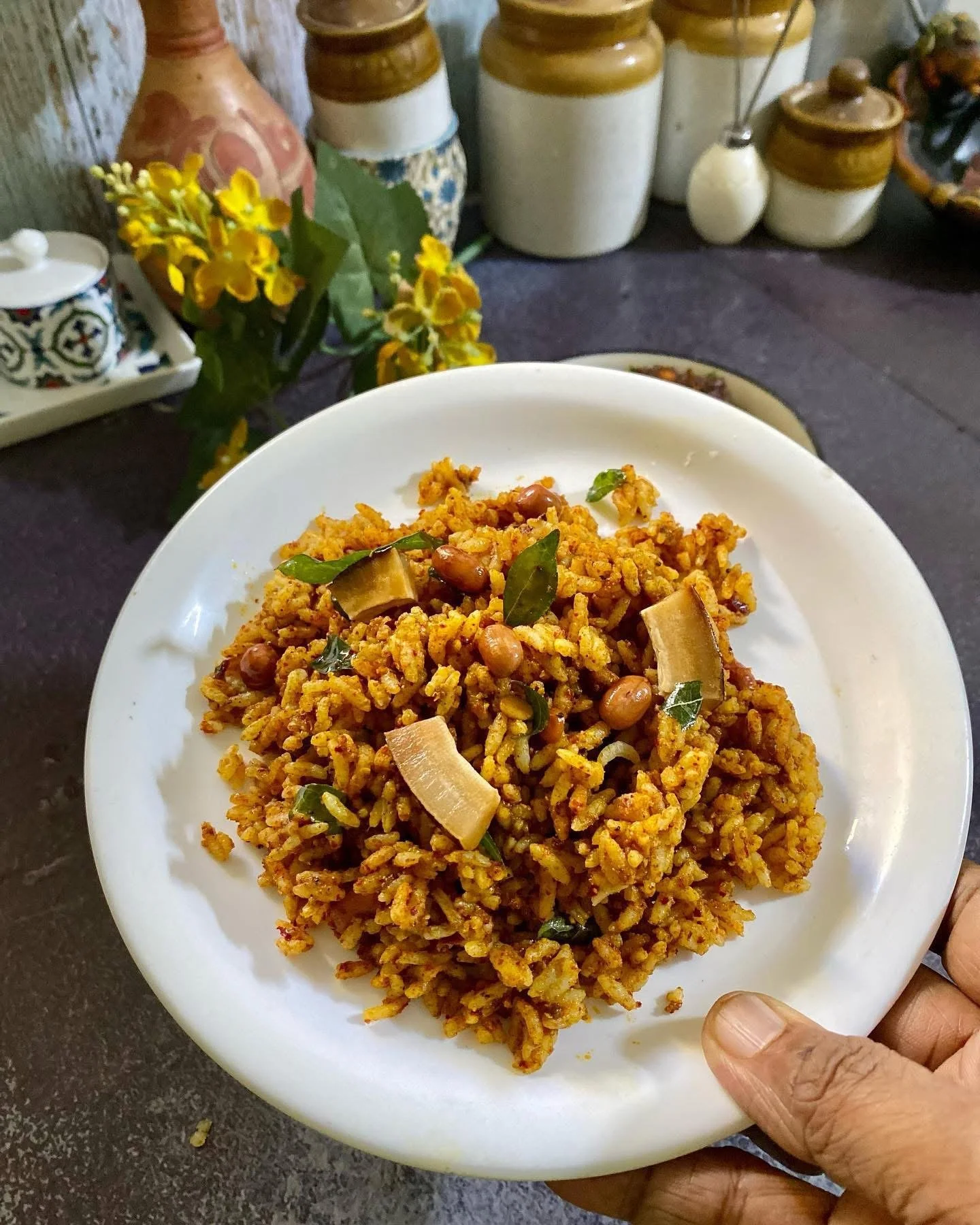
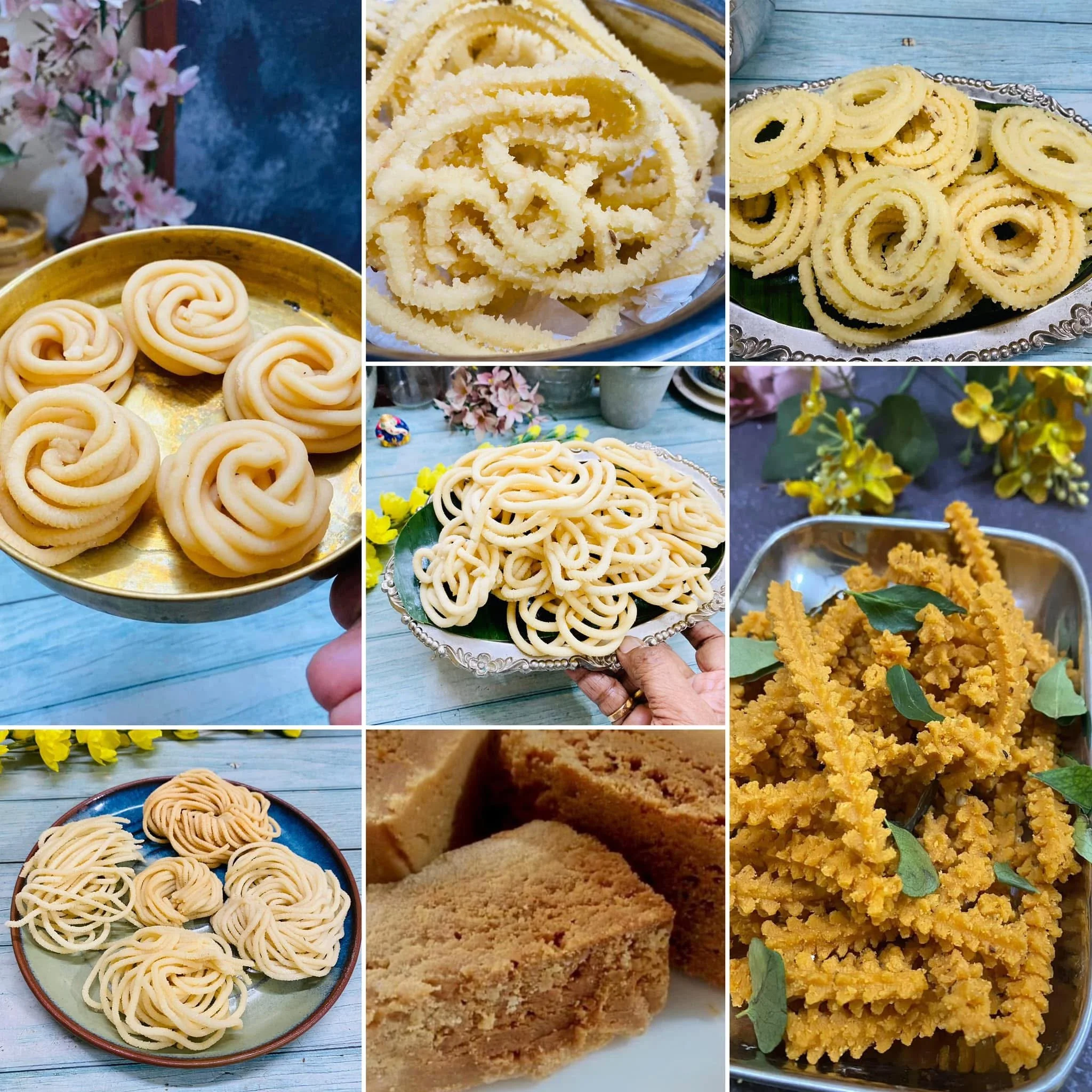
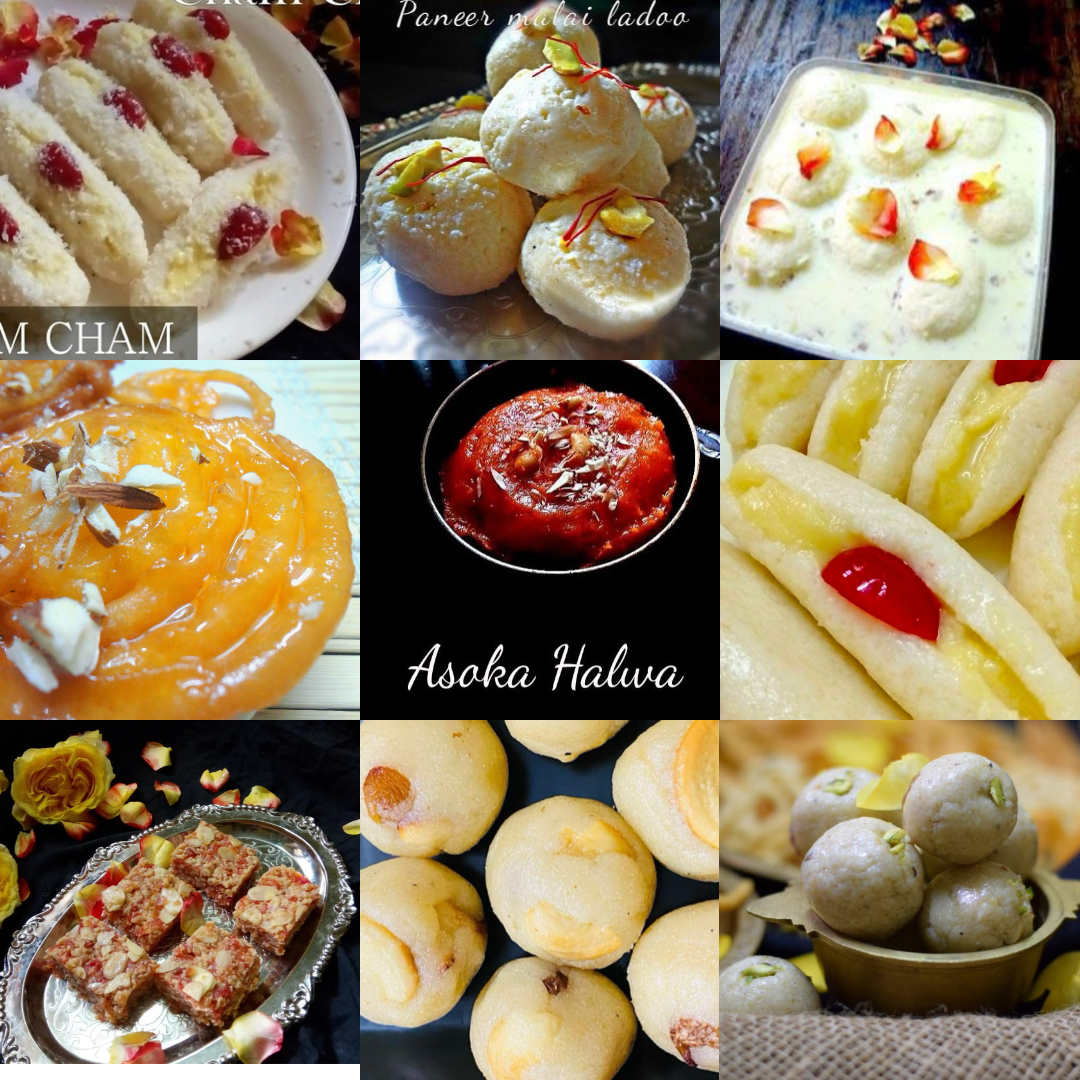
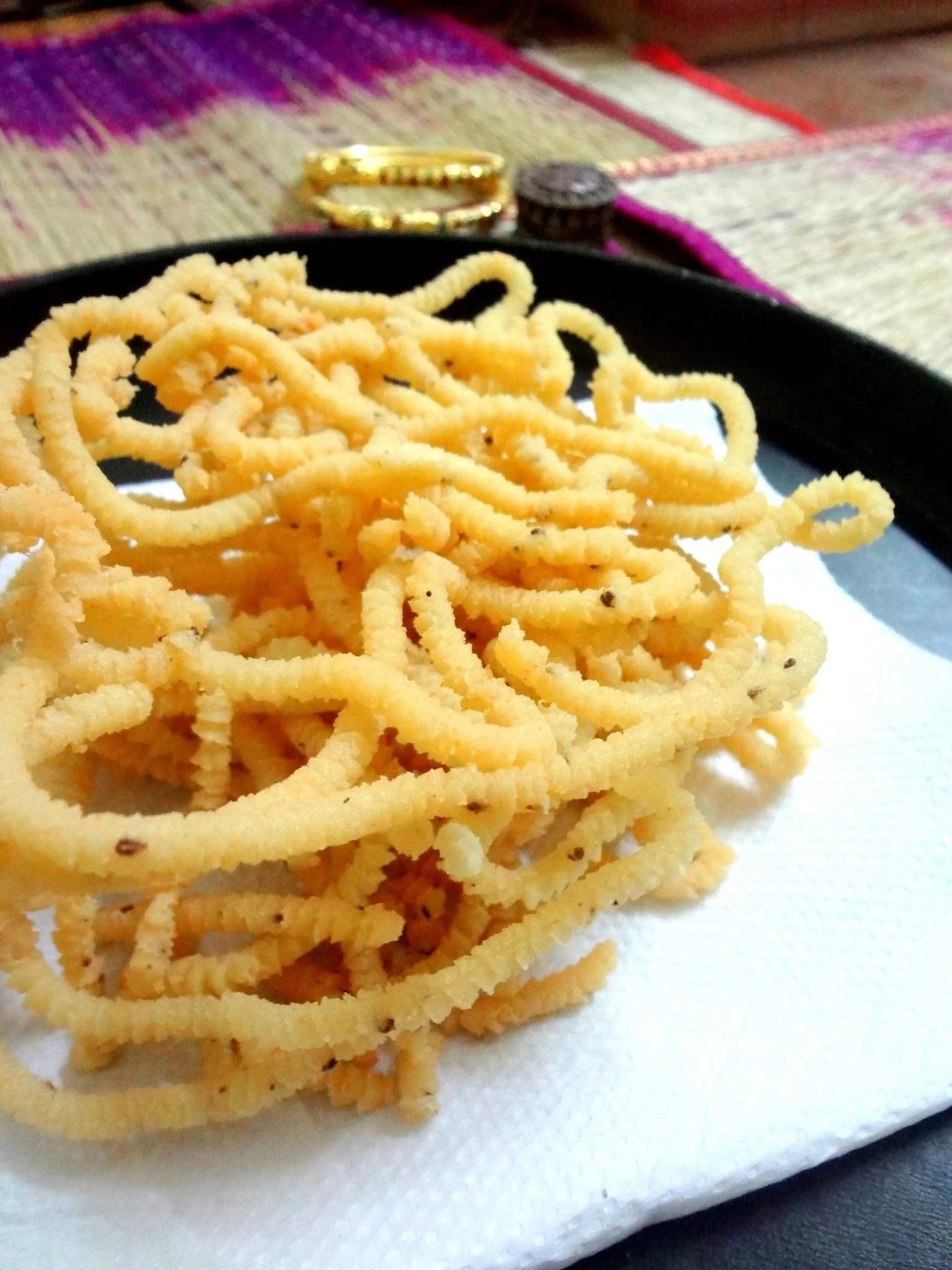

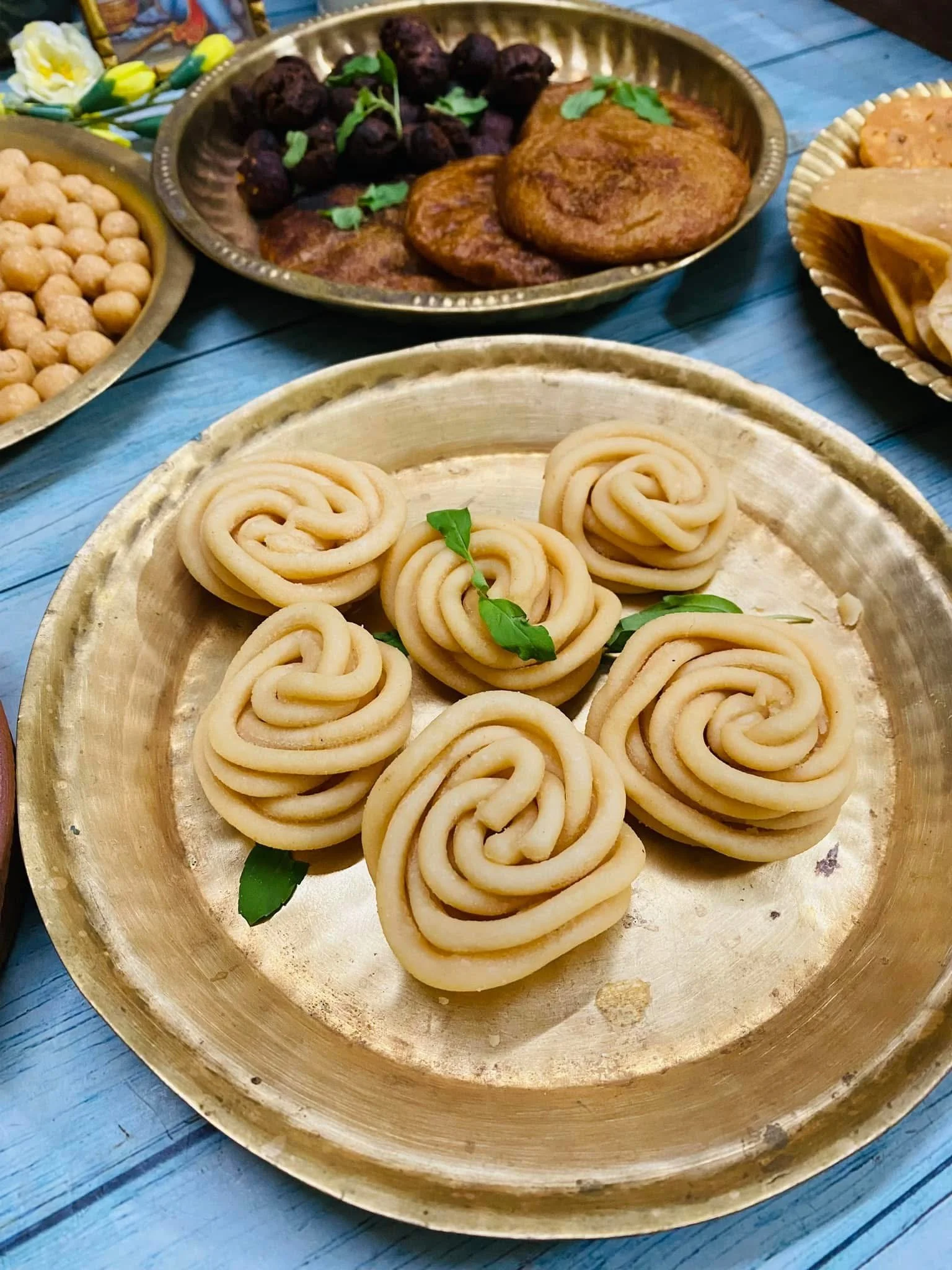


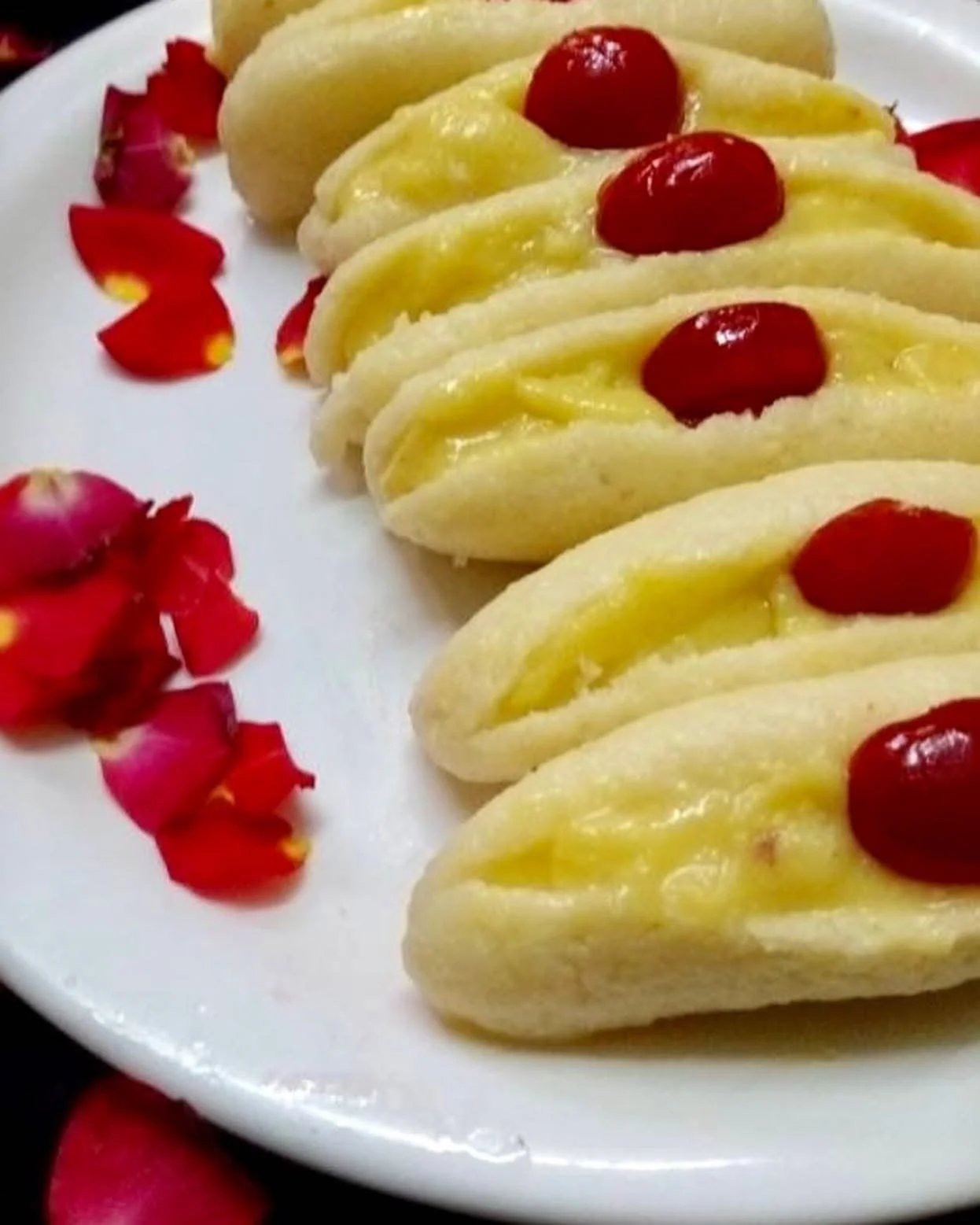

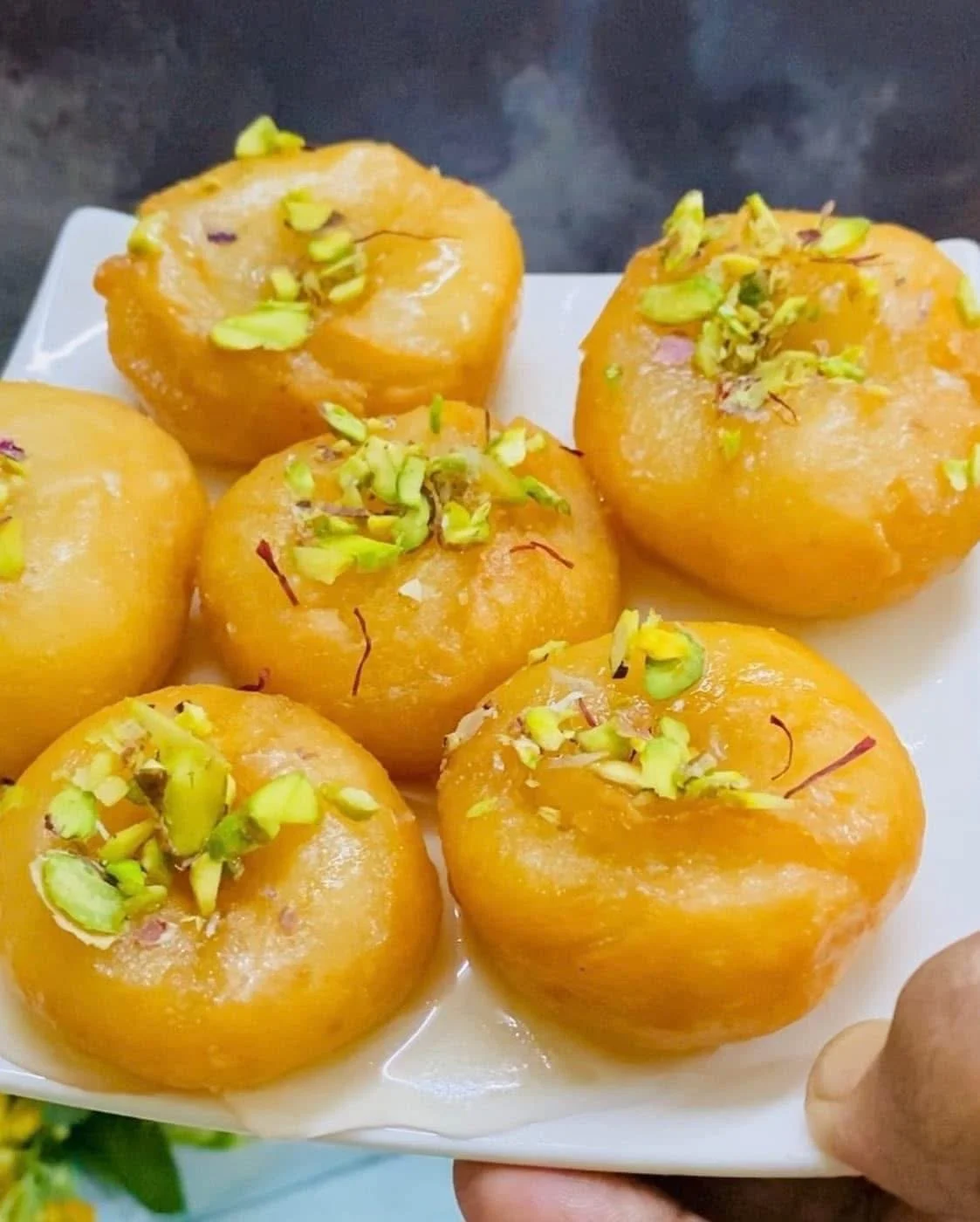








A simple homemade red gravy premix and white gravy premix that helps you prepare a variety of Indian side dishes in minutes. Perfect for quick cooking, travel, and everyday meals, this versatile curry base works beautifully with vegetables and paneer.